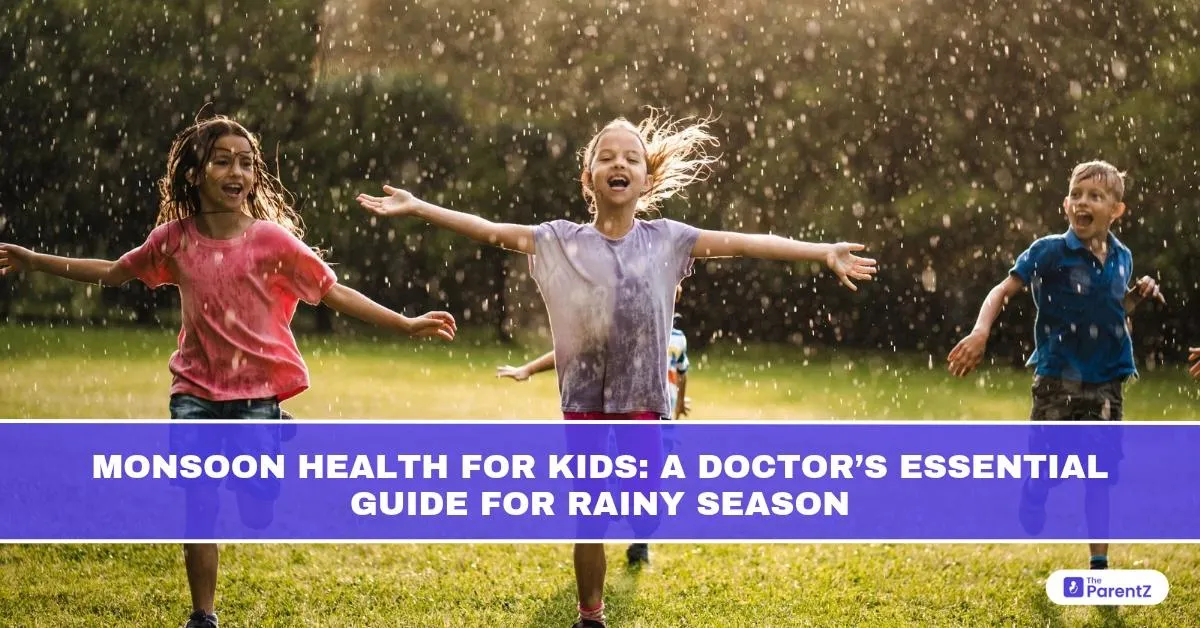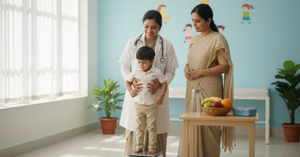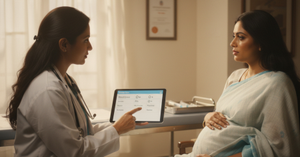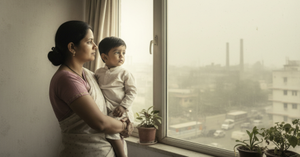When the Rain Brings More Than Just Puddles
The rains arrive like magic. After weeks of scorching heat, the skies darken, the wind cools, and children rush outside to jump into puddles and feel raindrops on their faces. But while the monsoon paints the world green and alive, it quietly brings with it a host of health challenges, especially for children.
In clinics across India, pediatricians begin to see the yearly spike: stubborn colds, high fevers, tummy upsets, fungal rashes, mosquito bites, and eye infections. Monsoon is a joyful season, but also a demanding one on young immune systems.
Why Children Fall Sick More in Monsoon
During the monsoon, humidity levels rise and stagnant water becomes a breeding ground for bacteria, viruses, and mosquitoes. The immune system, still developing in children, struggles to keep up.
Infections become more common because:
- Viruses thrive in damp air and spread easily in crowded schools.
- Water sources may become contaminated.
- Clothes and shoes stay damp, allowing fungi and bacteria to grow.
- Insects like mosquitoes flourish in puddles, increasing the risk of vector-borne diseases.
Doctors often see cases double or triple during these months, especially in children between 6 months to 10 years of age.
Common Illnesses During Monsoon
1. Respiratory Infections
Rainy weather increases the spread of viruses that cause colds, coughs, bronchitis, and even pneumonia. Children may develop persistent congestion or wheezing, particularly if they are prone to allergies or asthma.
2. Waterborne Diseases
Contaminated water can lead to diarrhea, vomiting, typhoid, and hepatitis A. These are not just mild stomach bugs; if ignored, they can cause dangerous dehydration and nutrient loss.
3. Mosquito-borne Illnesses
Dengue, chikungunya, and malaria cases rise sharply in the monsoon. Children may present with high fever, rashes, body pain, and fatigue. In some cases, hospitalization becomes necessary if platelets drop or fever spikes uncontrollably.
4. Skin and Fungal Infections
Prolonged dampness leads to rashes in body folds, athlete’s foot, or scalp infections. Children wearing wet shoes or sitting in damp uniforms are more prone to this.
5. Eye and Ear Infections
Conjunctivitis (pink eye), ear blockages, or fungal ear infections are also frequent due to moisture and poor hygiene.
Prevention: What Doctors Recommend
Most of these illnesses are preventable. Pediatricians suggest a combination of hygiene practices, immune support, and environmental awareness.
1. Boil or Purify Drinking Water
Even in urban homes, water pipes may leak or become contaminated during the monsoon. Boiling water or using a good purifier reduces the risk of gastrointestinal infections significantly.
2. Use Mosquito Protection Consistently
Apply child-safe repellents on exposed skin, especially in the evening. Ensure window screens are intact and avoid water stagnation in flowerpots, trays, or open drains near the home. Mosquito nets, especially for babies, are highly effective.
3. Keep Skin Clean and Dry
Encourage children to change out of wet clothes immediately. Body folds like armpits, behind the knees, and between toes must be dried properly. Fungal powders can help prevent skin rashes in older children.
4. Boost Immunity Through Diet
Doctors often see better outcomes in children who eat a wholesome, seasonal diet. Focus on warm, cooked foods. Include:
- Fresh fruits like papaya, guava, and pomegranate
- Warm soups and broths
- Turmeric milk, tulsi leaves, and amla for natural immune support. Avoid street food and raw salads during this season, as they can harbor unseen bacteria.
5. Keep Fingernails Trimmed and Hands Washed
Infections spread easily through the mouth. Dirty fingernails or unwashed hands after play are common culprits. Teach children to wash their hands before eating and after returning home.
6. Avoid School or Daycare If the Child Is Sick
It’s tempting to send your child with a mild cold, but that one infection can pass quickly to many others. One day of rest can prevent a classroom outbreak.
What to Do If Your Child Falls Sick
Most monsoon illnesses begin mildly runny nose, slight fever, loose stool. But some can worsen quickly. Pediatricians urge parents to keep a close eye on:
- High fever that persists beyond 48 hours
- Rashes with fever
- Lethargy or refusal to eat
- Repeated vomiting or watery diarrhea
- Labored breathing or wheezing
At the first sign of serious symptoms, consult your child’s doctor. Avoid over-the-counter antibiotics, which may do more harm than good if not prescribed appropriately.
Vaccinations Still Matter
Even in monsoon, routine vaccination must continue. In fact, vaccines like hepatitis A and typhoid offer protection specifically from waterborne illnesses that rise during this season. Doctors also emphasize the importance of staying up to date with DTP, flu, and measles vaccines.
Anonymous Note from a Doctor
“Every monsoon, I see the same cycle: bright, active children slowed down by preventable illnesses. Sometimes it’s just a cold. Other times, it’s dengue with falling platelets or severe dehydration from typhoid. The hardest part is telling parents it could’ve been avoided with safe drinking water, mosquito nets, or early rest. I don’t want to scare you, but to remind you that being watchful is not paranoia. It’s parenting in its most powerful form.”
Final Words: A Season to Savor Safely
The monsoon is magical, especially for children. The smell of wet earth, the sight of paper boats floating in puddles, the thrill of dancing in the rain, these memories stay for life. But so do the scars of a neglected infection or a hospital stay that could’ve been avoided.
As a parent, you don’t need to cancel the joy of this season. Just anchor it in awareness. A few simple habits can go a long way in protecting your child’s health. Let them jump, dance, and laugh, but let’s keep them healthy, rested, and safe while they do. Because nothing is more beautiful than a childhood enjoyed without falling sick.








Be the first one to comment on this story.